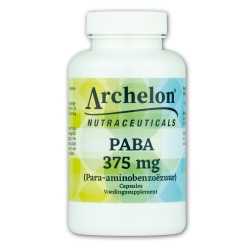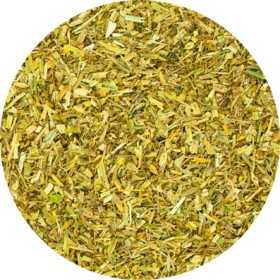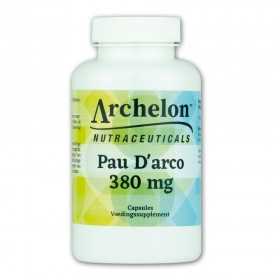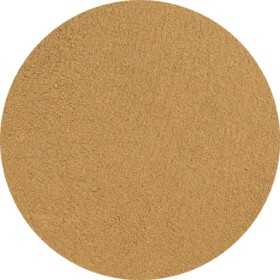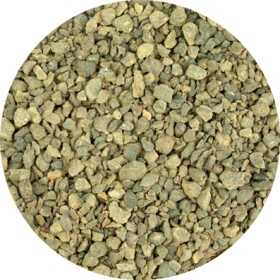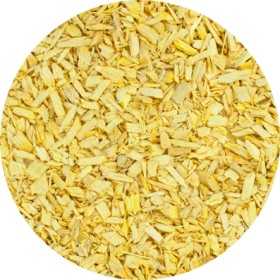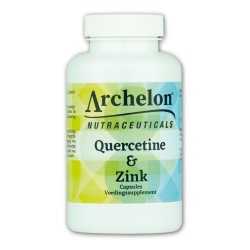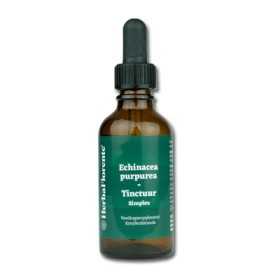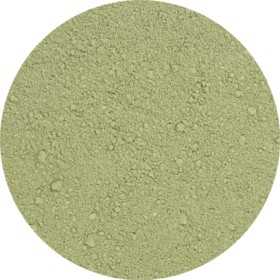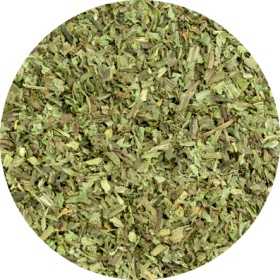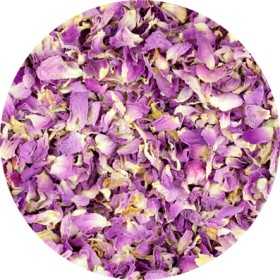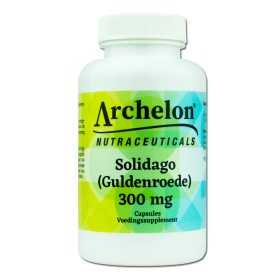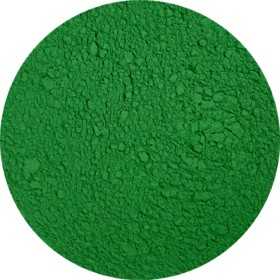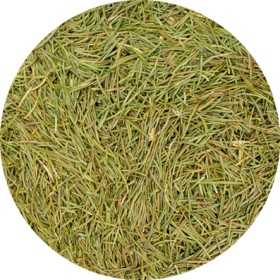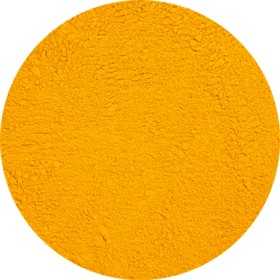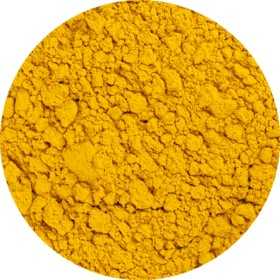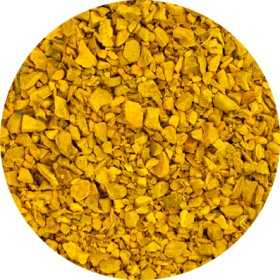Skin
There are 83 products.
Nettle Tincture - Urticae dioica Tincture
Single herbal tincture made with dried herb of Urticae dioica (Nettle).
The nettle (Urtica dioica) is a powerful and versatile plant that occurs in many places, despite its irritating property to the touch. Known for its culinary uses, such as nettle soup and tea, the nettle is also known for its health benefits.
Nettle leaf is a traditional herbal medicine with various applications. It contributes to healthy skin, gives shine to the hair and strengthens the nails. In addition, it can help soothe the respiratory tract and maintain proper fluid balance. It also provides support to the heart and blood vessels.
The nettle (Urtica dioica) is a powerful and versatile plant that occurs in many places, despite its irritating property to the touch. Known for its culinary uses, such as nettle soup and tea, the nettle is also known for its health benefits.
Nettle leaf is a traditional herbal medicine with various applications. It contributes to healthy skin, gives shine to the hair and strengthens the nails. In addition, it can help soothe the respiratory tract and maintain proper fluid balance. It also provides support to the heart and blood vessels.
€10.95
PABA (Para-Aminobenzoic Acid) - 375 mg
PABA (Para-aminobenzoic acid) belongs to the vitamin B complex, it is a vitamin-like substance. PABA performs several important functions, including keeping the skin, hair, and nails healthy. In addition, PABA is involved in protein metabolism, red blood cell production and the functioning of the intestinal system. PABA occurs naturally in wheat germ, bran, yogurt and organ meats.
€22.95
Pansy, Herb trinit Herb - Viola tricolor - Cut
The pansy (Viola tricolor) belongs to the violet family (Violaceae) and is native to Europe, from Lapland to the Mediterranean, and even in Siberia.
This plant, which is an annual but can sometimes be perennial, grows to a height of 30 cm and has roots that can go up to 45 cm deep. The flowering period extends from May to October. The flowers are at least 1 cm wide, but usually larger, with an average diameter of 1.5 cm.
The pansy was first described as a medicinal herb by Rembert Dodoens in 1554. It was traditionally used for childhood diseases and respiratory diseases. In England it was popular for treating heart disease, chest cramps and pleurisy.
This plant, which is an annual but can sometimes be perennial, grows to a height of 30 cm and has roots that can go up to 45 cm deep. The flowering period extends from May to October. The flowers are at least 1 cm wide, but usually larger, with an average diameter of 1.5 cm.
The pansy was first described as a medicinal herb by Rembert Dodoens in 1554. It was traditionally used for childhood diseases and respiratory diseases. In England it was popular for treating heart disease, chest cramps and pleurisy.
€2.00
From: €2.00
Pau D'arco - 380 mg
Pau d'arco (Tabebuia avellanedae) is an imposing tree that thrives in the Amazon rainforest. The bark of the pau d'arco has been used for centuries in traditional herbal medicine for its diverse uses, including its supportive effects on the immune system.
The inner layer of the bark of Tabebuia avellanedae is packed with flavonoids, powerful antioxidants that protect our bodies against oxidative damage caused by free radicals. In addition, it contains a significant amount of quinones. More than 20 quinone compounds have already been discovered in the bark of the pau d'arco, such as lapachol and beta-lapachone. In addition, the bark contains substances that help defend against unfavorable bacteria and fungi.
The inner layer of the bark of Tabebuia avellanedae is packed with flavonoids, powerful antioxidants that protect our bodies against oxidative damage caused by free radicals. In addition, it contains a significant amount of quinones. More than 20 quinone compounds have already been discovered in the bark of the pau d'arco, such as lapachol and beta-lapachone. In addition, the bark contains substances that help defend against unfavorable bacteria and fungi.
€19.95
Pau D'arco - Tabeuiae
Pau d'arco (Tabebuia avellanedae) is an imposing tree that thrives in the Amazon rainforest. The bark of the pau d'arco has been used for centuries in traditional herbal medicine for its diverse uses, including its supportive effects on the immune system.
The inner layer of the bark of Tabebuia avellanedae is packed with flavonoids, powerful antioxidants that protect our bodies against oxidative damage caused by free radicals. In addition, it contains a significant amount of quinones. More than 20 quinone compounds have already been discovered in the bark of the pau d'arco, such as lapachol and beta-lapachone. In addition, the bark contains substances that help defend against unfavorable bacteria and fungi.
The inner layer of the bark of Tabebuia avellanedae is packed with flavonoids, powerful antioxidants that protect our bodies against oxidative damage caused by free radicals. In addition, it contains a significant amount of quinones. More than 20 quinone compounds have already been discovered in the bark of the pau d'arco, such as lapachol and beta-lapachone. In addition, the bark contains substances that help defend against unfavorable bacteria and fungi.
€2.60
From: €2.60
Plantain Broadleaf - Plantaginis major
The Plantain Broadleaf (Plantago major) is a plant belonging to the plantain family (Plantaginaceae) and varies in size from 10 to 50 cm. It forms a dense leaf rosette that is resistant to foot traffic, which is why it is often considered a weed. This plant species is common in gardens, along roads and paths, and is sometimes derisively called the "white man's footprint". Nevertheless, there is a cultivated variety known as Plantago major 'Rosularis'.
€2.00
From: €2.00
Propolis - Propolis
Propolis, the secret weapon of the bee colony, is used to protect the hive or hive against bacteria and fungi and as 'cement' to close the openings. It is a natural brown-red substance consisting of vegetable resins, beeswax, essential oils and pollen, with traces of vitamins and minerals.
From June onwards, honey bees collect resin from the buds and leaves of trees and herbaceous plants on warm days. They mix this with their saliva and process it with their paws, ultimately creating propolis.
From June onwards, honey bees collect resin from the buds and leaves of trees and herbaceous plants on warm days. They mix this with their saliva and process it with their paws, ultimately creating propolis.
€44.00
From: €44.00
Propolis Tincture - Propolis Tincture
Single tincture made with Propolis.
Propolis, the secret weapon of the bee colony, is used to protect the hive or hive against bacteria and fungi and as 'cement' to close the openings. It is a natural brown-red substance consisting of vegetable resins, beeswax, essential oils and pollen, with traces of vitamins and minerals.
From June onwards, honey bees collect resin from the buds and leaves of trees and herbaceous plants on warm days. They mix this with their saliva and process it with their paws, ultimately creating propolis.
Propolis, the secret weapon of the bee colony, is used to protect the hive or hive against bacteria and fungi and as 'cement' to close the openings. It is a natural brown-red substance consisting of vegetable resins, beeswax, essential oils and pollen, with traces of vitamins and minerals.
From June onwards, honey bees collect resin from the buds and leaves of trees and herbaceous plants on warm days. They mix this with their saliva and process it with their paws, ultimately creating propolis.
€20.95
Quassia - Quassiae - Cut
Quassia, known in Surinamese as kwasibita, is the heartwood of the Quassia amara, a plant species from the Quassia genus within the Tree of Heaven family. This South American plant is often planted in the tropics for its use as a remedy for malaria.
Quassia amara is a small, evergreen shrub found in tropical South America, particularly the Guianas, northern Brazil and Venezuela. The plant grows in the understory of the rainforest and its striking red flowers are pollinated by hummingbirds. Because of these beautiful flowers, the plant is also often planted for decorative purposes.
Quassia amara is a small, evergreen shrub found in tropical South America, particularly the Guianas, northern Brazil and Venezuela. The plant grows in the understory of the rainforest and its striking red flowers are pollinated by hummingbirds. Because of these beautiful flowers, the plant is also often planted for decorative purposes.
€2.40
From: €2.40
Quercetin & Zinc
Quercetin is a flavonoid, also called bioflavonoid. This natural plant compound is found in various plants, fruits and vegetables. Flavonoids are responsible for the vibrant colors (pigments) in these plants and come in various shades. They play a crucial role in plant metabolism, regulate growth, and provide protection against UV light, oxidation and heat.
Zinc is available in different forms. Zinc bisglycinate has a very good bioavailability. It is a chelated form of zinc bound to two (bis) molecules of the amino acid glycine which has more benefits for the body. Zinc has a very wide range of action and is involved in many body processes. Zinc is essential for the activity of more than 300 enzymes that have the zinc ion as a cofactor.
Zinc is available in different forms. Zinc bisglycinate has a very good bioavailability. It is a chelated form of zinc bound to two (bis) molecules of the amino acid glycine which has more benefits for the body. Zinc has a very wide range of action and is involved in many body processes. Zinc is essential for the activity of more than 300 enzymes that have the zinc ion as a cofactor.
€34.95
Quercetin - 250 mg
Quercetin is a flavonoid, also called bioflavonoid. This natural plant compound is found in various plants, fruits and vegetables. Flavonoids are responsible for the vibrant colors (pigments) in these plants and come in various shades. They play a crucial role in plant metabolism, regulate growth, and provide protection against UV light, oxidation and heat.
Quercetin belongs to a group of plant compounds known as flavonoids. Many flavonoids contribute to the coloring of plants to some extent. In addition, quercetin is a powerful antioxidant. It can be well combined with other antioxidant flavonoids, such as rutin and vitamin C, for an enhanced effect.
Quercetin belongs to a group of plant compounds known as flavonoids. Many flavonoids contribute to the coloring of plants to some extent. In addition, quercetin is a powerful antioxidant. It can be well combined with other antioxidant flavonoids, such as rutin and vitamin C, for an enhanced effect.
€27.95
Red Coneflower Tincture - Echinacea purpurea Tincture
Single herbal tincture made with dried herb & root of Echinacea purpurea (Red Coneflower).
Purple coneflower (Echinacea purpurea) is one of the most widely grown and used herbs in the world because of its positive influence on the immune system. The genus name 'echinacea' is derived from the Greek word 'echinos', meaning 'hedgehog', because of the spiky flower cone. Since the beginning of the last century, much research has been done into Echinacea purpurea in Europe.
Purple coneflower (Echinacea purpurea) is one of the most widely grown and used herbs in the world because of its positive influence on the immune system. The genus name 'echinacea' is derived from the Greek word 'echinos', meaning 'hedgehog', because of the spiky flower cone. Since the beginning of the last century, much research has been done into Echinacea purpurea in Europe.
€12.95
Ribwort Plantain - Plantaginis lanceolata
Ribwort Plantain (Plantago lanceolata) is a native plant that thrives in Europe, parts of Asia, North Africa and North America. The young leaves of this plant contain a rich mix of beneficial substances, including mucilages, tannins, bitter substances, flavonoids and minerals such as potassium and zinc. Best known for its soothing effect on the throat thanks to its mucilages, plantain also provides support for the immune system and promotes normal intestinal function. In addition, it can help maintain flexible joints and is beneficial for the liver.
€2.40
From: €2.40
Ribwort Plantain - Plantaginis lanceolata - Cut
Narrow plantain (Plantago lanceolata) is a native plant that thrives in Europe, parts of Asia, North Africa and North America. The young leaves of this plant contain a rich mix of beneficial substances, including mucilages, tannins, bitter substances, flavonoids and minerals such as potassium and zinc. Best known for its soothing effect on the throat thanks to its mucilages, plantain also provides support for the immune system and promotes normal intestinal function. In addition, it can help maintain flexible joints and is beneficial for the liver.
€2.00
From: €2.00
Rose - Rosae damascena
Rosae damascena, also known as the damask rose, is a versatile flower with many names, including the Iranian rose, Bulgarian rose, Taif rose, Ispahan rose and Castile rose.
These flowers are known for their delicate fragrance and are grown commercially for rose oil, both "rose otto" and "rose absolute", which is widely used in perfumery. They are also used to make rose water and "rose concrete". The petals are even edible and are used to flavor dishes, as a garnish, to make herbal tea and to preserve gulkand in sugar. Moreover, the damask rose is the national flower of Iran.
These flowers are known for their delicate fragrance and are grown commercially for rose oil, both "rose otto" and "rose absolute", which is widely used in perfumery. They are also used to make rose water and "rose concrete". The petals are even edible and are used to flavor dishes, as a garnish, to make herbal tea and to preserve gulkand in sugar. Moreover, the damask rose is the national flower of Iran.
€12.50
From: €12.50
Solidago (Goldenrod) - 300 mg
Solidago virgaurea, also known as Goldenrod or Goldenrod, is a native plant that traditionally grows in Europe and Asia. In earlier times, this golden yellow flower was a permanent part of the Dutch herb garden. The yellow flowers were traditionally dried on a large scale and ground into a base for paint.
Solidago supports the kidneys and their function. It can be used for discomfort prior to menstruation and menopausal symptoms. In addition, solidago helps keep the joints flexible, strengthens resistance and contributes to good mental balance.
Solidago supports the kidneys and their function. It can be used for discomfort prior to menstruation and menopausal symptoms. In addition, solidago helps keep the joints flexible, strengthens resistance and contributes to good mental balance.
€19.95
Spirulina - 450 mg
Spirulina, a type of algae, provides support to the immune system through its rich nutrients and relieves fatigue.
The blue-green spirulina is a type of algae that contains both chlorophyll (green pigment) and phycocyanin (blue pigment). These single-celled algae form spiral microscopic strands and thrive in warm, fresh water.
With its abundance of essential nutrients, spirulina is invaluable to our body. It contains more than 60% complete protein, almost three times more than beef, and is rich in vitamin B complex, vitamin E, carotenoids, iron, manganese, zinc and essential fatty acids such as gamma-linolenic acid. With ten different mixed carotenoids, spirulina is the most beta-carotene-rich food known.
The blue-green spirulina is a type of algae that contains both chlorophyll (green pigment) and phycocyanin (blue pigment). These single-celled algae form spiral microscopic strands and thrive in warm, fresh water.
With its abundance of essential nutrients, spirulina is invaluable to our body. It contains more than 60% complete protein, almost three times more than beef, and is rich in vitamin B complex, vitamin E, carotenoids, iron, manganese, zinc and essential fatty acids such as gamma-linolenic acid. With ten different mixed carotenoids, spirulina is the most beta-carotene-rich food known.
€19.95
Spirulina - Spirulina platensis
Spirulina, a type of algae, provides support to the immune system through its rich nutrients and relieves fatigue.
The blue-green spirulina is a type of algae that contains both chlorophyll (green pigment) and phycocyanin (blue pigment). These single-celled algae form spiral microscopic strands and thrive in warm, fresh water.
With its abundance of essential nutrients, spirulina is invaluable to our body. It contains more than 60% complete protein, almost three times more than beef, and is rich in vitamin B complex, vitamin E, carotenoids, iron, manganese, zinc and essential fatty acids such as gamma-linolenic acid. With ten different mixed carotenoids, spirulina is the most beta-carotene-rich food known.
The blue-green spirulina is a type of algae that contains both chlorophyll (green pigment) and phycocyanin (blue pigment). These single-celled algae form spiral microscopic strands and thrive in warm, fresh water.
With its abundance of essential nutrients, spirulina is invaluable to our body. It contains more than 60% complete protein, almost three times more than beef, and is rich in vitamin B complex, vitamin E, carotenoids, iron, manganese, zinc and essential fatty acids such as gamma-linolenic acid. With ten different mixed carotenoids, spirulina is the most beta-carotene-rich food known.
€2.50
From: €2.50
Spruce - Picea Abies
The Norway spruce (Picea abies) belongs to the pine family (Pinaceae) and is native to Northern and Central Europe. It is an imposing conifer that can grow up to 50 meters high.
This tree is monoecious and has a narrow, cone-shaped crown. Spruce trees that grow at lower elevations tend to have wider crowns to be less affected by snow accumulation. The twigs are reddish to orange-brown, while the buds are smooth, brown and pointed. The needles are dark green on all sides and surround the twigs. They are stiff, sharply pointed, square in cross-section and can grow 1 to 2.5 cm long. The lifespan of the needles can be up to 5 to 7 years.
This tree is monoecious and has a narrow, cone-shaped crown. Spruce trees that grow at lower elevations tend to have wider crowns to be less affected by snow accumulation. The twigs are reddish to orange-brown, while the buds are smooth, brown and pointed. The needles are dark green on all sides and surround the twigs. They are stiff, sharply pointed, square in cross-section and can grow 1 to 2.5 cm long. The lifespan of the needles can be up to 5 to 7 years.
€2.00
From: €2.00
Super ORAC Antioxidant Complex
Super ORAC Antioxidant Complex is designed to fight free radicals and reduce oxidative stress. Rich in polyphenols and with a high ORAC value, our formula is designed to provide you with powerful antioxidants that help your body neutralize harmful free radicals.
Balanced mix of nutrients to support the cells to give them the best possible support in the fight against oxidative damage.
Balanced mix of nutrients to support the cells to give them the best possible support in the fight against oxidative damage.
€79.50
Tumeric long. - Curcumae longae
Curcuma (also known as Turmeric) (Curcuma longa) is respected worldwide as one of the most valuable herbs. It originates in the tropical regions of India and Southeast Asia. The powder of the root is known for its popularity in Asian cuisine and is known in the Netherlands as turmeric, due to its role in coloring curry and mustard.
In addition to its culinary uses, turmeric also offers several health benefits. Curcuma has been used in India for centuries because of its effective effect on flexible joints and intestinal function. It is a powerful antioxidant that benefits the liver and musculoskeletal system, while also aiding digestion.
In addition to its culinary uses, turmeric also offers several health benefits. Curcuma has been used in India for centuries because of its effective effect on flexible joints and intestinal function. It is a powerful antioxidant that benefits the liver and musculoskeletal system, while also aiding digestion.
€2.00
From: €2.00
Tumeric long. - Curcumae longae - Cut
Curcuma (also known as Turmeric) (Curcuma longa) is respected worldwide as one of the most valuable herbs. It originates in the tropical regions of India and Southeast Asia. The powder of the root is known for its popularity in Asian cuisine and is known in the Netherlands as turmeric, due to its role in coloring curry and mustard.
In addition to its culinary uses, turmeric also offers several health benefits. Curcuma has been used in India for centuries because of its effective effect on flexible joints and intestinal function. It is a powerful antioxidant that benefits the liver and musculoskeletal system, while also aiding digestion.
In addition to its culinary uses, turmeric also offers several health benefits. Curcuma has been used in India for centuries because of its effective effect on flexible joints and intestinal function. It is a powerful antioxidant that benefits the liver and musculoskeletal system, while also aiding digestion.
€2.00
From: €2.00
Tumeric zanth. - Curcumae zanthorrhizae
Curcuma (also known as Javanese Ginger) (Curcumae zanthorrhizae) is respected worldwide as one of the most valuable spices. It originates in the tropical regions of India and Southeast Asia. The powder of the root is known for its popularity in Asian cuisine and is known in the Netherlands as turmeric, due to its role in coloring curry and mustard.
In addition to its culinary uses, turmeric also offers several health benefits. Curcuma has been used in India for centuries because of its effective effect on flexible joints and intestinal function. It is a powerful antioxidant that benefits the liver and musculoskeletal system, while also aiding digestion.
In addition to its culinary uses, turmeric also offers several health benefits. Curcuma has been used in India for centuries because of its effective effect on flexible joints and intestinal function. It is a powerful antioxidant that benefits the liver and musculoskeletal system, while also aiding digestion.
€2.20
From: €2.20
Tumeric zanth. - Curcumae zanthorrhizae - Cut
Curcuma (also known as Javanese Ginger) (Curcumae zanthorrhizae) is respected worldwide as one of the most valuable spices. It originates in the tropical regions of India and Southeast Asia. The powder of the root is known for its popularity in Asian cuisine and is known in the Netherlands as turmeric, due to its role in coloring curry and mustard.
In addition to its culinary uses, turmeric also offers several health benefits. Curcuma has been used in India for centuries because of its effective effect on flexible joints and intestinal function. It is a powerful antioxidant that benefits the liver and musculoskeletal system, while also aiding digestion.
In addition to its culinary uses, turmeric also offers several health benefits. Curcuma has been used in India for centuries because of its effective effect on flexible joints and intestinal function. It is a powerful antioxidant that benefits the liver and musculoskeletal system, while also aiding digestion.
€2.00
From: €2.00
















